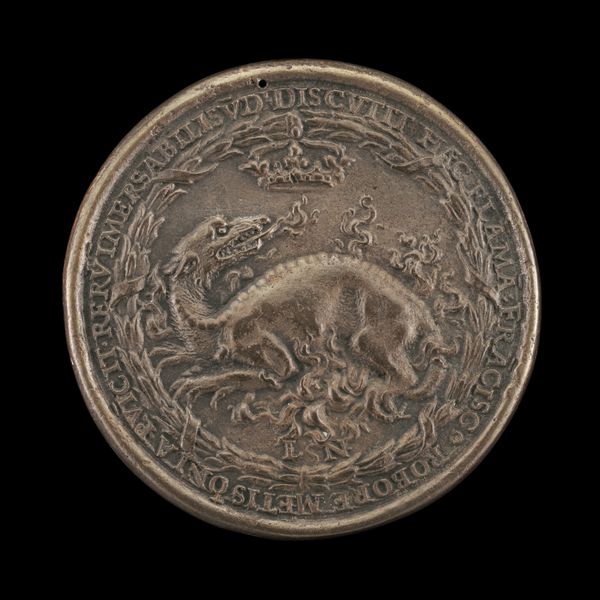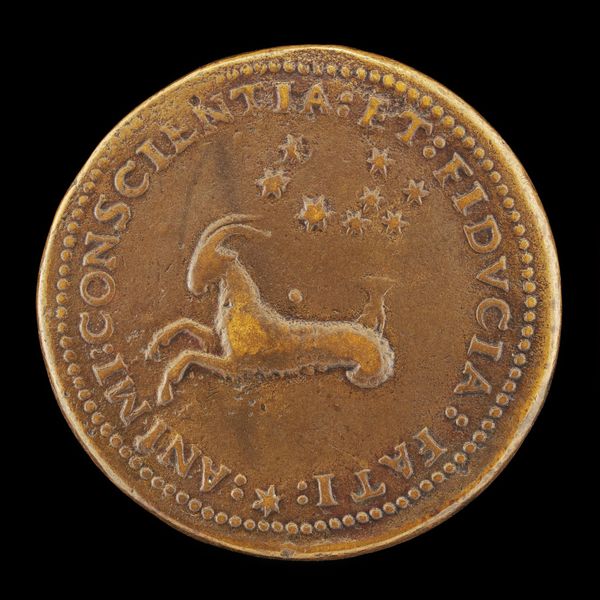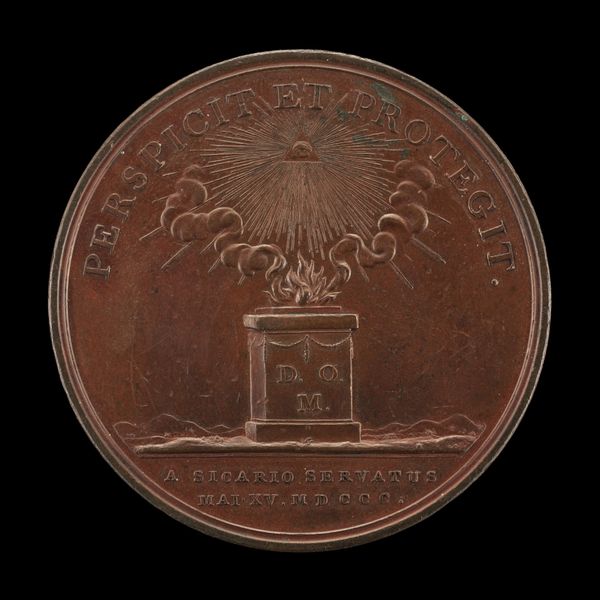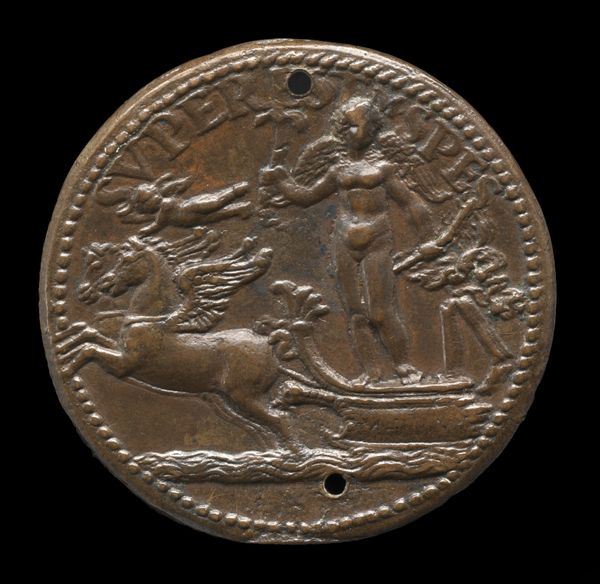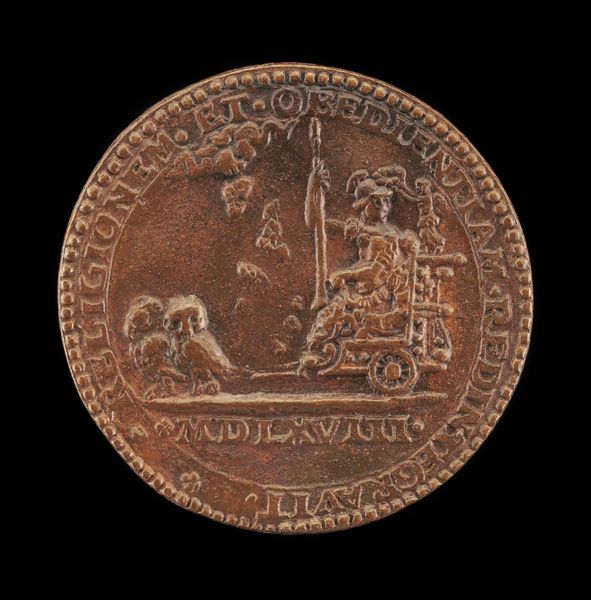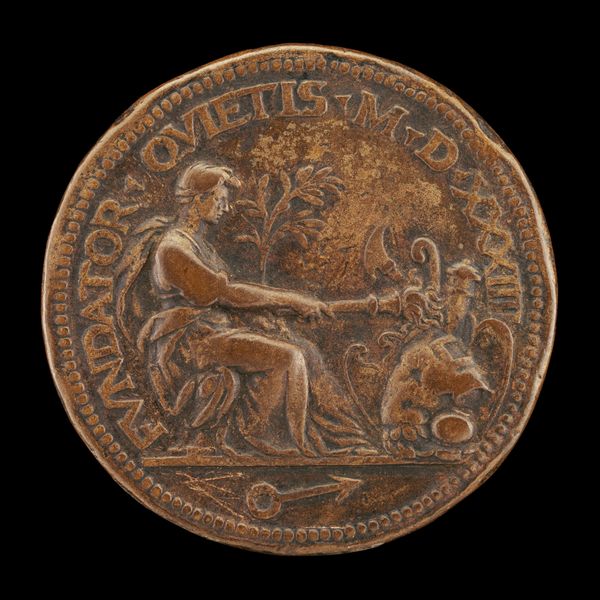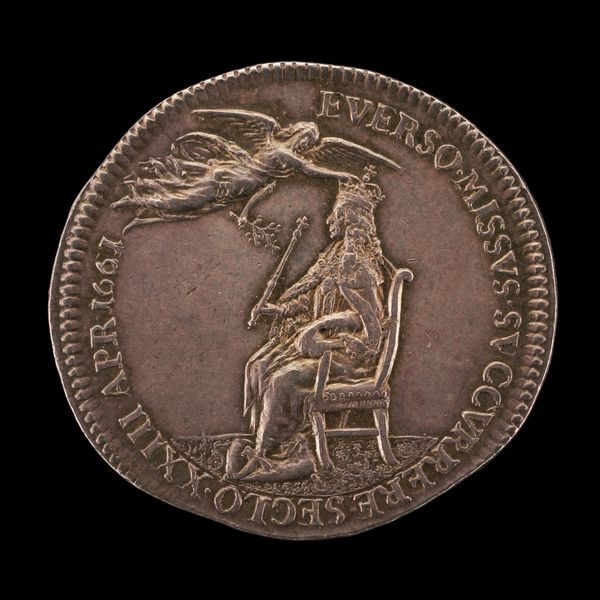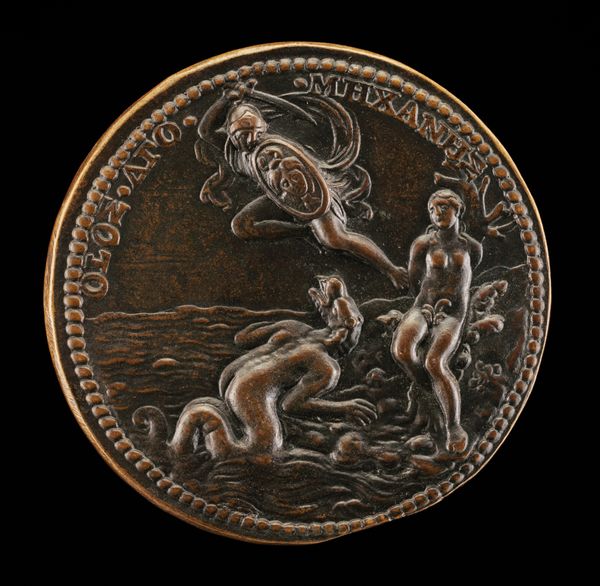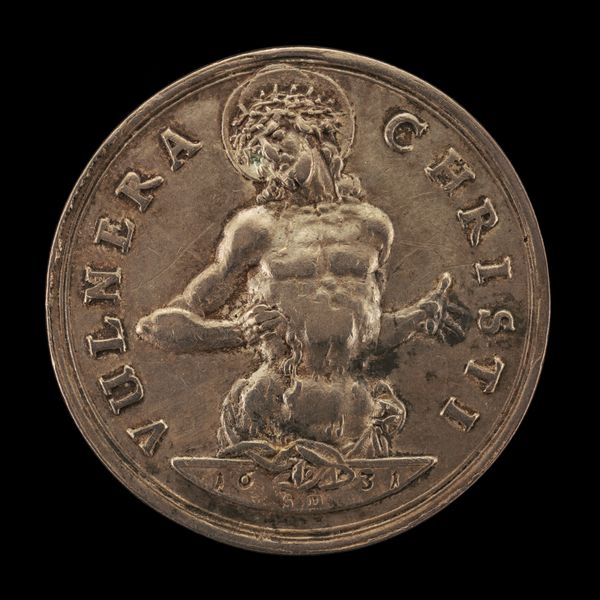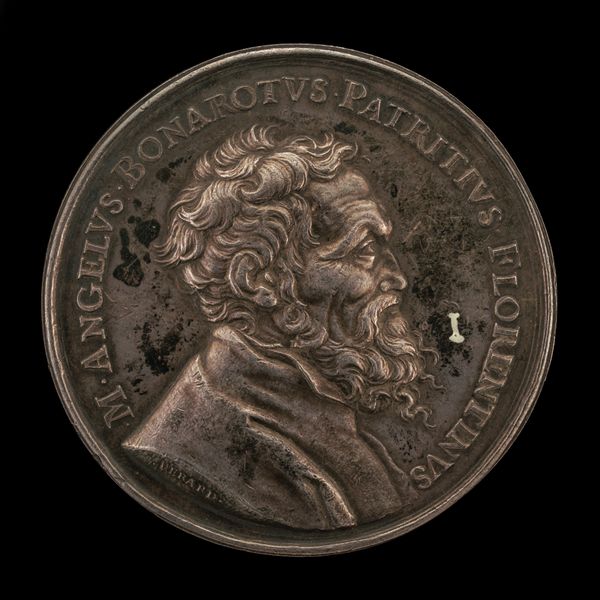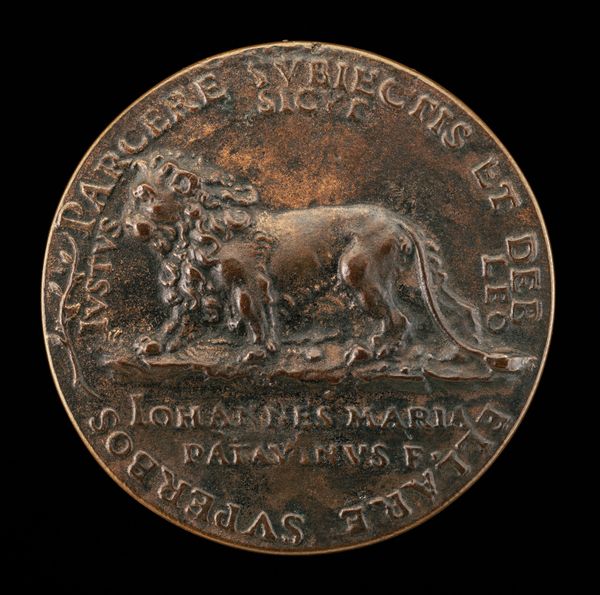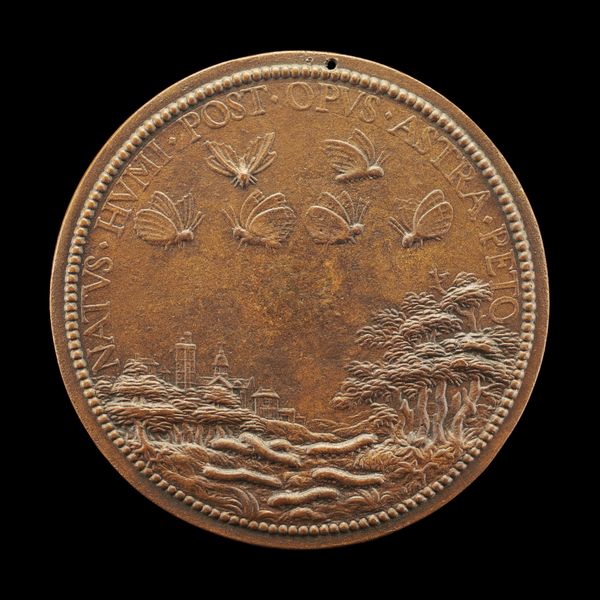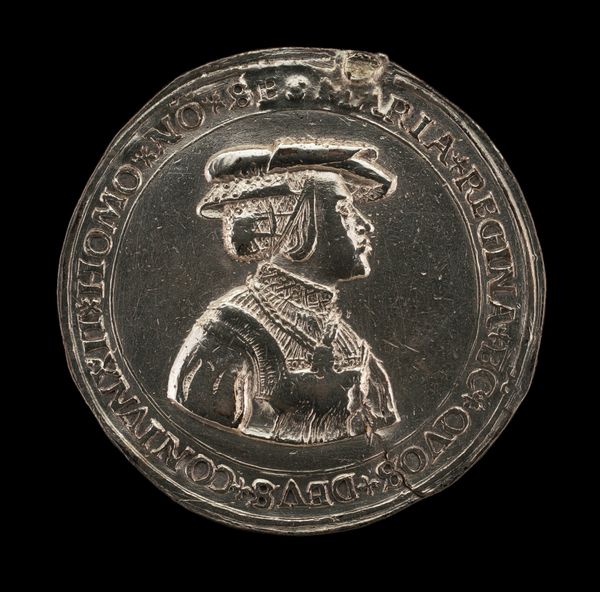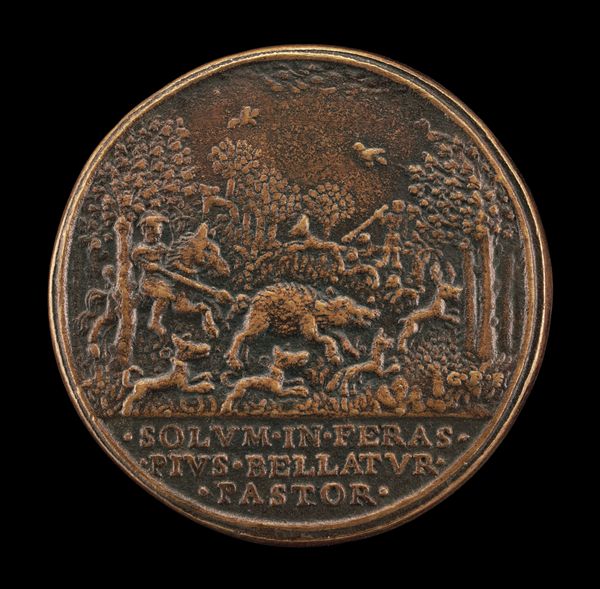
Emblems of the Arts with the Belvedere Torso (reverse) 1673
0:00
0:00
metal, relief, sculpture
#
portrait
#
allegory
#
baroque
#
metal
#
stone
#
relief
#
sculpture
#
history-painting
Dimensions: overall (diameter): 5.65 cm (2 1/4 in.)
Copyright: National Gallery of Art: CC0 1.0
Curator: Looking at this small relief, there is something initially haunting about it, almost mournful. Editor: Yes, it definitely evokes a sense of melancholy. We are looking at “Emblems of the Arts with the Belvedere Torso (reverse),” a metal relief created in 1673 by Gérard Léonard Hérhard. Curator: The fragment of the Belvedere Torso dominates, yet it is incomplete. That missing head! It immediately draws attention to ideas around loss, decay. The past is present but fragmented. Editor: Exactly. And consider the title, “Emblems of the Arts.” Around the torso, we see symbols of artistic disciplines – a painter’s palette, perhaps architectural plans. These discarded emblems contrast so sharply with the powerful central image. I read it as a critique of institutions that idolize classical forms while discarding artistic expression of the moment. What purpose does art serve? Who has access? Curator: I appreciate your questioning the canon. Yet, seeing the scattered implements alongside the powerful torso also sparks thoughts about cultural memory and how artists always draw from those that came before them. Look at the careful replication of what was an icon itself! Editor: Sure, it reflects history but it might glorify this history rather than question who gets remembered in its making. Also consider that “feliciter iunxit,” the phrase inscribed on top, indicates some sort of unifying success... Was there true cultural reconciliation achieved by only uniting under dominant traditions, maybe even silencing marginalized ones in its wake? Curator: Interesting! So you read it more as a forceful subsumption, rather than harmonious unification of artistic heritage? Editor: Yes, certainly that the “unity” could point to colonial dynamics of imposing European artistic forms onto other, non-European cultural landscapes. Curator: It’s remarkable how much complexity this little medallion holds. It prompts us to ask big questions: what remains of the classical world, and at what cost? Editor: Exactly. And what is worth preserving in the name of tradition.
Comments
No comments
Be the first to comment and join the conversation on the ultimate creative platform.
